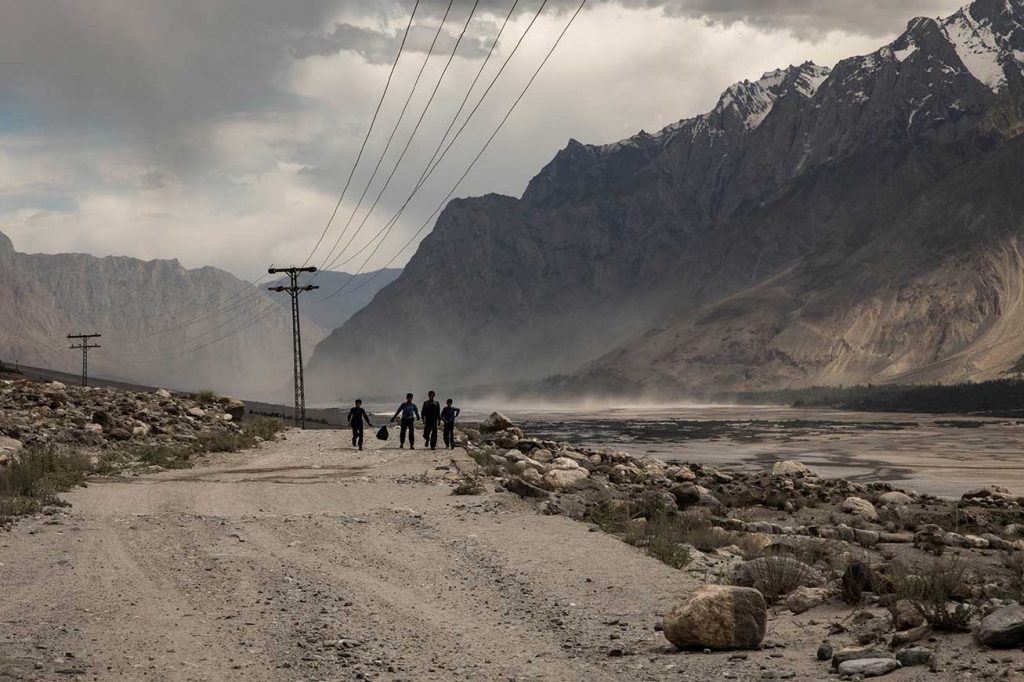With the reproducibility of images at the beginning of the 19th century and the invention of roll film, photojournalism also became increasingly important. Where previously heavy equipment had to be brought in, mobile and flexible photojournalism was now possible. Photojournalism became a permanent institution at the latest with travel and war photography. In the long term, photojournalism replaced wood engraving as well as press sketches and ultimately became a much-used medium in the daily press from 1920 onwards under the argument of authenticity. The development of 35mm cameras such as the Leica 1 or Kodak No. 1 contributed significantly to this. Photojournalism has always been an integral part of reporting on topics such as politics, culture or sports.
Historically, however, photojournalism developed in a questionable direction from the very beginning. During the First and Second World Wars, it picked up speed and was at the same time misused for propaganda and censorship. In addition, from the beginning there was a great focus on portraying people and events as favorably as possible. A conscious representation of reality was not the focus. Over time, however, this changed and photojournalism also became the basis for our understanding of what is really going on in the world.
Thus, it clearly has its dark sides and is rightly viewed critically. Again and again, the profession is accused of voyeurism, one-sidedness and an aestheticization of violence based on shock photos. Here, too, the criticism is not far-fetched, as there have already been enough sketchy publications in the past, such as the photo of the drowned Syrian boy Alan Kurdi in 2015. This photo has burned itself into the collective memory so much that we all probably know it or have at least heard of it. For this reason, the photo is a good example to refer to a previous blog post on the topic of ethics in photography and ask again the unanswered questions:
“How do I manage to photograph the moment with dignity, and possibly document contemporary history, without crossing a certain line? Where does that boundary lie? Is it okay for me to be here at all? Am I a voyeur?”
Out of the darkness into the light
Looking at Alan Kurdi’s story, the other side of photojournalism also becomes clear at this point. It can serve as a contemporary witness and capture contemporary history, give a voice to the weak and oppressed, draw attention to social injustice, and thus create empathy and understanding. Pictures of photographers even manage to call people and governments to action and to confess for crimes against humanity. Thus, over the last century, there have been valuable contributions, such as the work of Dorothea Lange, Robert Capa, Sebastiao Salgado, Henri Cartier-Bresson, James Nachtwey, and Margaret Bourke-White, to name a few. As a rule, parties to a conflict have no interest in unfiltered reporting, which is a clear limitation. If we keep in mind that history was mostly written by the victors, it is again essential to contribute on a journalistic level to finding the truth and documenting contemporary history.
This commitment becomes especially important in countries where freedom of expression and human rights are systematically undermined. Journalists are obliged to find the truth, to report fairly and objectively, and to be respectful and tolerant of difficult opinions. If we go after the ethics agreement for journalists, the well-being of the public stands therefore over everything else! This basis automatically leads to the question of which practices are acceptable and which are not. Using the example of Alan Kurdi, everyone can ask themselves what they think about the fact that the photo of the drowned boy was published.
Is it a shocking document of contemporary history and shows in memory cruel abuses, or is it voyeurism and earned money on the death of a child? As difficult as this answer may be, I would rather not answer it myself, especially since there is an interview with Alan Kurdi’s father. So let’s just let Abdullah Kurdi have his say and see for yourselves.
What conclusion do we draw from this?
If we look at all the points one by one, we inevitably realize how large and complicated the whole problem is. A good place to start is to visualize and understand the various issues. Before investing energy in a full-blown outrage, it is time well spent to research the background. Especially in our time, which is strongly influenced by the media, one should not trust every report and certainly not rely exclusively on the headline. Keep in mind that there is always an intention behind an article or a text and ask yourself what this intention could be?! Last but not least, we must be tolerant of difficult opinions and try to return to a healthy culture of discussion.
Finally, when it comes to the question of how to try to make a valuable contribution as a photographer, I still see photojournalism as a great opportunity. It is important to be aware of the possible consequences that sensitive topics bring and to always consider the context in which you are moving in terms of cultural & photographic history. At the same time, it’s perfectly okay to have a critical approach to media and to question reporting from time to time. This is where many of the qualities that make a good photojournalist come together. With a healthy intuition, a lot of sensitivity and a well-ordered moral compass, it is also possible to bring about something good in bad times.
